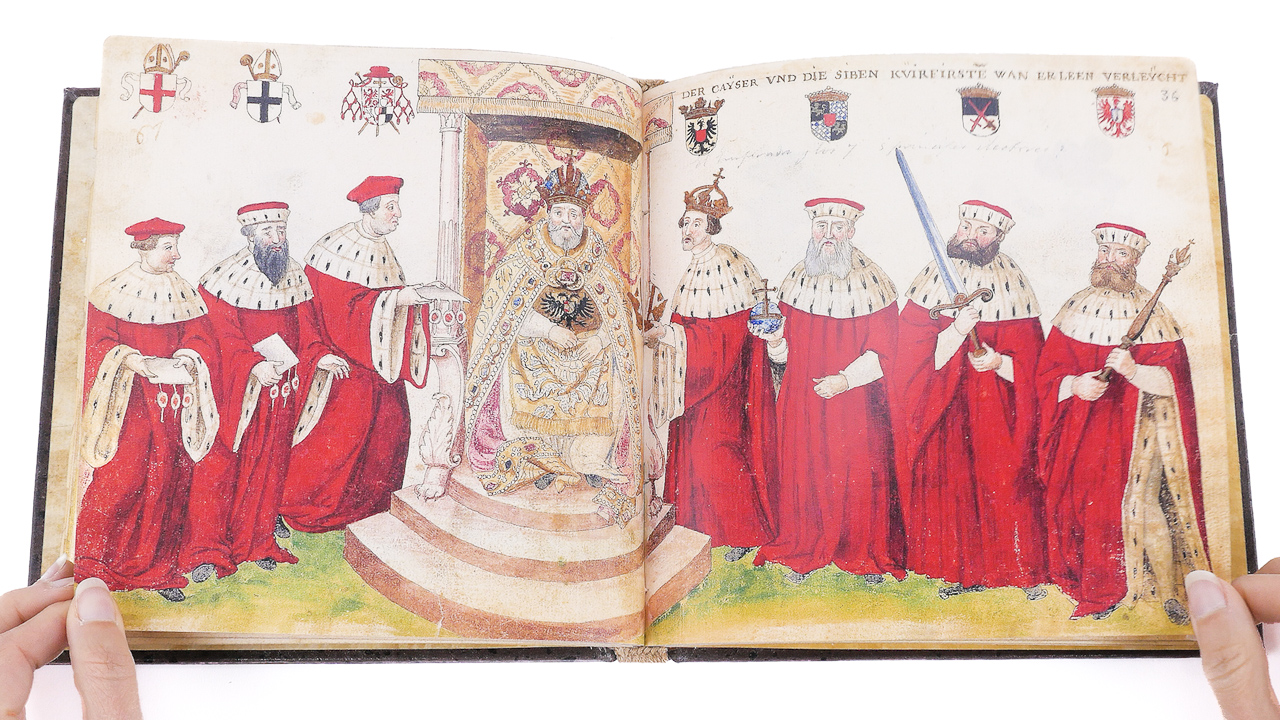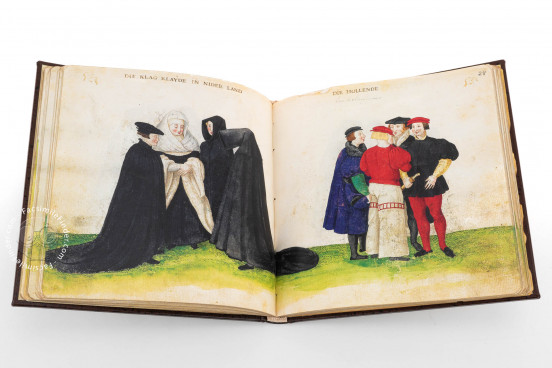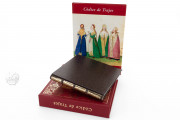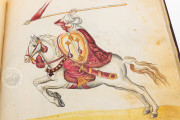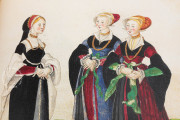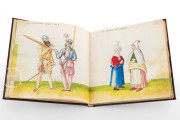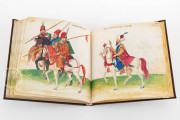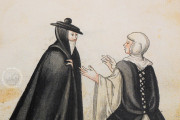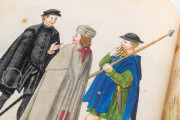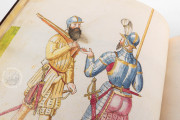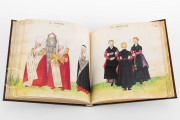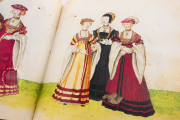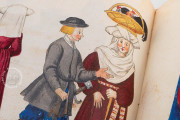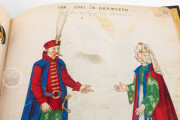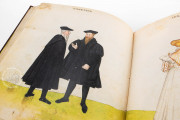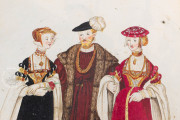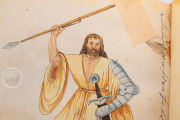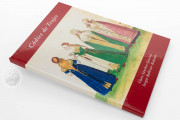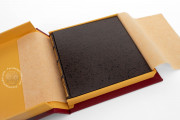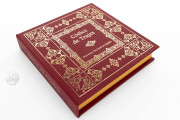The Madrid Costume Book is certainly one of the most important manuscripts on clothing of the 16th century for it represents a great source for knowledge of the costumes and fashion of the time. For the dating of the codex, also known as Codice de Trajes, many theories have been put forward.
The Costume Book, like the title suggests, is a repertoire of Spanish costumes and the typical clothing of the various countries which were part of the empire of Charles V (1500-1557) including Africa and America.
Costume Books – Several Models
Although the origin remains unknown, a relation with Albert Durer's works as well as other artists like Altdorfer or Burkmair can be traced. Furthermore, there is a clear connection with contemporary artists that the author knew perfectly, an example is Lucas Cranach the Elder (1472-1553), whose work is partially echoed in the illustration of the emperor and the seven elector princes on ff. 35v-36r. Another example is the Jan Cornelisz Vermeyen (1500-1559), whose work is copied with extreme fidelity in the illustration of the dance of the peasants.
Fashion Frenzy
With Charles V, who assembled the largest known empire and in whose second half of the reign the Costume Book is located, fashion was already solidly established, dragging some to excessive passion or mania, and even to economic ruin, and provoking great misgivings among the rulers and religious bodies of Europe, which issued an abundant legal regulation, pretending, among other things, to reserve the use of luxurious fabrics to the nobles, although without much success.
Travelling Works
In the imperial cities of Augsburg and Nuremberg, where the codex seems to have been created, worked the artists who drew the most beautiful costumes of all time. Sometimes, they were travelling works (perhaps, the Costume Book was like that as well), because they were made while their authors accompanied the emperor in his multiple displacements, forming part of his entourage or that of princes and wealthy merchants. Spain, Flanders and Germany maintained a close connection in fashion through great fluidity in the exchange of images.
We have 1 facsimile edition of the manuscript "Madrid Costume Book": Códice de Trajes facsimile edition, published by Piaf, 2018
Request Info / Price
